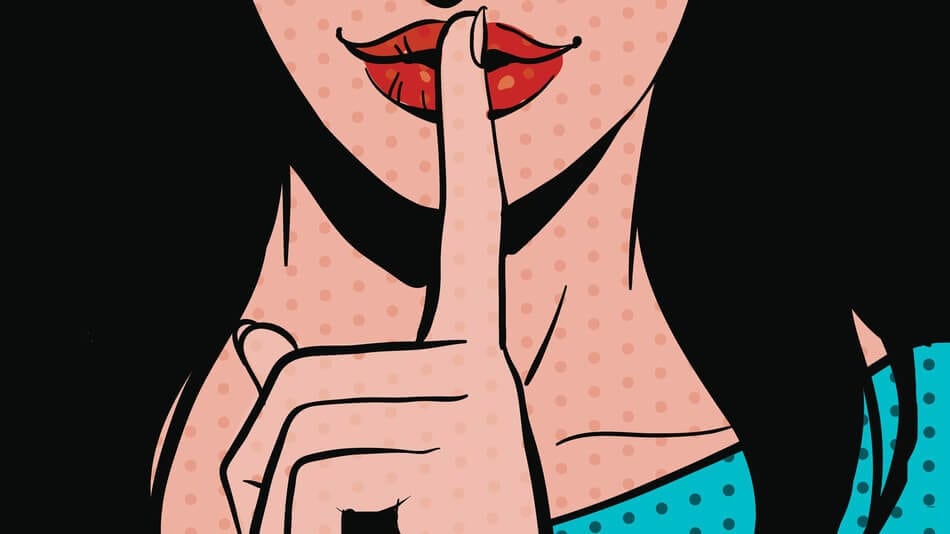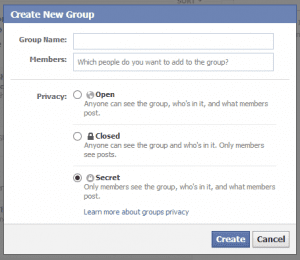Psst. It’s time we let you in on a bit secret. Facebook Groups are gaining in popularity, and not simply among users. Changes made this year to the almighty news feed algorithm have given priority to groups over pages, prompting brands to shift their technique to include groups.
Groups are hubs of engagement. More than 1.4 billion of Facebook’s 2.2 billion monthly active users check groups each month. However, only 200 million users are in what Facebook founder Mark Zuckerberg calls “meaningful groups.” In the near future, Zuckerberg expects that number to rise to 1 billion.
Many of those “meaningful groups” are secret groups. Hidden from cyber trolls, spammers and contrarians, secret groups provide members with an area for like-minded individuals to seek advice, share opinions, and set up. Because secret groups provide more privacy, members are sometimes more candid and more active.
Here’s the scoop on everything you should find out about Facebook’s secret groups.
What is a Facebook secret group?
There are 3 kinds of groups on Facebook: public, closed, and secret. Public groups are basically general admission. Everybody can find and view the group without needing the approval to join.
Closed groups are more exclusive. Like public groups, everybody can seek for and look at the name, description and member list of a closed group. However, users can’t view the group’s content until they become a member. To join a closed group you must be approved by an administrator or invited by a current member.
Secret groups provide the same level of privacy as closed groups under a cloak of invisibility. Nobody can seek for secret groups or request to join them. The only method to get in is to know somebody who can invite you. Everything shared in a secret group is visible only to its members.
How to join Facebook secret groups
Since secret groups are unsearchable and secretive by definition, you must know somebody who’s in the know to get you in. Here’s the way to go about joining a secret group:
Step 1: Ask a current member to invite you. For this to work, you should be friends on Facebook, too.
Step 2: Check your inbox or your notifications for the invitation.
Step 3: Read the group guidelines. Most often you will discover group guidelines pinned to the top of the page, in the group’s description, or in a shared doc.
Step 4: Look out for a new member post. Some administrators will ask new members to acknowledge that they have read and agree with the rules.
How private are Facebook secret groups?
It is no secret that nothing is ever really private on the Internet. Facebook, of course, has access to all content material on its platforms and can put the content of a secret group under review for various causes.
Secret groups might have their own guidelines, however, they also need to adhere to Facebook’s Community Standards. Groups or users reported for violations of those requirements such as hate speech, harassment, violence or nudity can be investigated and taken down. Facebook can also be obliged to handover secret group info if requested by the government.
Following the fallout of the Cambridge Analytica data breach scandal, Facebook announced plans to restrict third-party data access to groups. At present, third-party apps need permission from an administrator to access group content for Facebook secret groups.
Group settings could change, too. In 2017 Hulu created a secret group for audiences of “The Handmaid’s Tale.” In anticipation of the launch of the second season, the group’s administrators decided to make the group public to achieve a wider view. The decision upset many members who didn’t intend for their earlier posts to be publicly available. Facebook currently doesn’t permit groups with more than 5,000 members to switch to less restrictive privacy settings.
Why use a Facebook secret group?
There are many causes to use Facebook secret groups.
During the 2016 US Presidential Election, Hillary Clinton supporter Libby Chamberlain made the secret group Pantsuit Nation for like-minded progressives. According to Chamberlain, the group—which grew to 3.9 million members in a few months —contains members who do not essentially want to broadcast their political views to their personal Facebook group. Of course, a respite from Pepe trolls and Russian bots probably does not hurt, too.
If it takes a village to raise a child, then why not make a secret virtual village, especially for dads who might feel awkward reaching out for help. Or, perhaps you are just a really hardcore potato chip lover who founded Gettin’ Chippy With It since you only have time for people who like potato chips as much as you.
The cat can be out of the bag on those secret Facebook groups, however, do not forget, you still should know an insider to get an invite.
Obviously, a really good cause to create a secret group is if you want to maintain something a secret. Perhaps you want to plan a surprise party for a friend or colleague. Make a pregnancy announcement with family and close friends. Create a support group for somebody suffering from an illness. Or, as Facebook offers, gather participants of a reality display yet-to-be-launched. (If there is a secret group for Queer Eye out there, let it be known that I want in.)
Facebook Secret groups for brands
Most of the time brands purpose to achieve as wide an audience as possible, however, there could be advantages to going off the radar. Facebook secret groups can be utilized to generate buzz and brand intrigue, be a safe fan forum, or offer exclusive access to content or promotions.
By making an official and private surrounding, members could feel more comfortable to express their opinions. And, moderators won’t need to worry about spammers or encroaching third-party firms.
Last year Facebook launched Groups for Pages, so page owners can make branded groups without using personal profiles.
When you are considering using a group for your business, here’s everything you need to know.
How to set up a Facebook secret group
Step 1: Get started.
Click on the “Create” button, found in the top right of the page header, and choose “Group.”
Step 2: Fill in the essentials.
To create your group, add a name and some members. For an extra touch, you could personalize invitations to members for an extra touch and to explain the group’s function if you like.
Step 3: Choose privacy settings.
Select “Secret Group” under the privacy drop-down.
Step 4: Personalize your group.
Begin by adding a cover picture and description. You could also add tags and locations.
Step 5: Adjust your settings.
Under the cover, picture click on “More” then choose “edit group settings.” Here you could pick your group kind, control membership approvals, post approvals, and set different group permissions.
You could also set up links to pages, which is great for brands wanting to link with their brand page.
Pro tip: When you’re undecided what privacy level you have set for your group, go to the group’s page and search for the group name in the upper left corner. Underneath it’ll read either public, closed, or secret.
Changing Your Group’s Privacy Settings
In case your group isn’t set to secret and you’d like to change your settings, go to the “edit group settings” kind. Scroll down to privacy and click on “change privacy settings” and choose “secret.”
Note: When you’ve changed your group to secret, you have only 24 hours to change your group settings back. After that, in case your group has more than 5,000 members, there is no going back to closed or public settings. Facebook only permits administrators to change groups to more restrictive settings.
Whenever you change a group’s settings, members will receive a notification.
Tips for managing a Facebook secret group
Managing a secret group could be trickier than other kinds of Facebook groups or pages. Follow these steps to make sure best practices.
Step 1: Establish clear community guidelines
That is where you will let group members know the aim of the group, community standards, and instructions.
You could pin guidelines in a post to the upper of your page, put them in the group’s description, include them in a doc, or all the above.
Some things you could want to include in your guidelines are:
- Who’s eligible to join the group. You might also want to share instructions on the way to add members.
- Who to disclose and who not to disclose information about the group with. When you have a strict non-disclosure policy, you should also include repercussions for “outing” the group.
- Policies on hate speech, racism, graphic content, harassment, and other unwanted behavior.
- Do’s and Don’ts. Do’s help members understand the best methods to engage with the group. Don’ts clarify the group’s targets and policies. For instance, you could want to discourage solicitations, advertisements, memes, and so on.
- Regularly Asked Questions. When you find that members are repeatedly asking moderators the same questions, it could make sense to add an FAQ.
- Where to search out group resources and documents.
Step 2: Invite trustworthy moderators
That is particularly necessary in case you anticipate having lots of members. Extra help moderating comments, approving new members, and responding to member inquiries shall be key to running a successful group.
Step 3: Determine day-to-day responsibilities
When you’ve identified trustworthy moderators, set up a schedule so it’s clear who’s anticipated to care for responsibilities at given times. If it makes sense, make that schedule public so group members know who to contact on any given day.
Step 4: Review and update
Be sure to keep your guidelines fresh. Facebook policies could change, new questions could come up, or new developments could need to be addressed.
It’s always good to leave a timestamp, too, so members know when the rules have most recently been edited.
So, the secret’s out. Facebook secret groups are awesome. Sure, they could require a little more moderation than a public or closed group, however, members could be more inclined to engage more candidly and more often.



